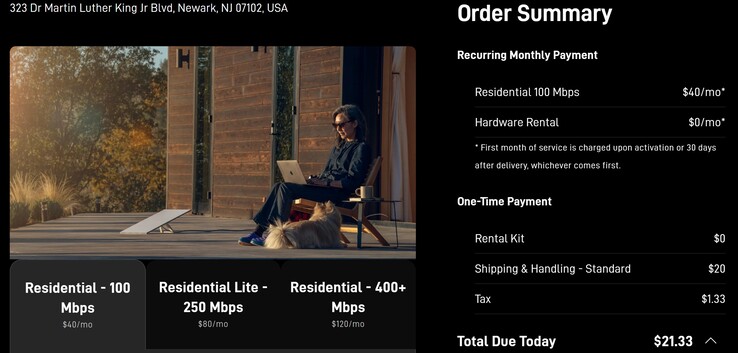After the lowest ever price for a Standard or Mini dish with a Roam plan, Starlink has now introduced its cheapest ever satellite Internet plan, too.
The new Residential plan prices start from just $40 a month to deliver speeds of up to 100 Mbps that Starlink considers suitable for two or three people in a household that does a normal amount of browsing or video streaming in up to HD resolution. The plan includes unlimited data and upload speeds, too.
That is quite the Starlink subscription price drop, as the next available tier costs $80 a month for the Residential Lite plan that can deliver speeds of up to 250 Mbps. Granted, Starlink also offers a $60/month plan for two years, but that deal is for repeat customers who have cancelled service, and whom it wants to bring back into the SpaceX satellite Internet fold.
The new $40 Starlink plan seems to be predominantly available in regions where SpaceX needs to compete for federal rural connectivity money with the likes of AT&T, Spectrum, or Comcast. When Elon Musk still had a stint at the White House earlier in the year, the federal Broadband Equity Access and Deployment (BEAD) program altered its rural broadband coverage funding requirements to include satellite Internet providers, too.
This irked broadband companies that actually have to lay down fiber, as Starlink could take part in state auctions that disperse the $42 billion of government funding for rural Internet by simply providing a free dish and up to 100 Mbps speeds, or exactly what it is offering with the new basic Residential plan.
The good news is that subscribers on higher tiers can switch to the 100 Mbps plan if listed. "Existing Residential customers may switch to the Residential 100 Mbps plan if it appears as an available option in their account," tips Starlink
The BEAD program doesn't cover the monthly subscription fees, though, and some states do include plan pricing as additional funding criteria. With Starlink cutting the Residential plan payment to just $40/month there, its offering becomes competitive with fiber in that respect as well. The move would increase its chances to grab an even larger chunk of the federal program for affordable connectivity in "underserved" areas.
























